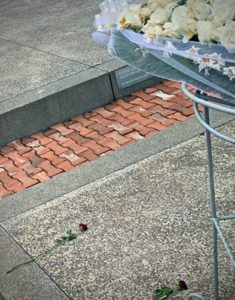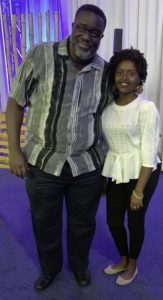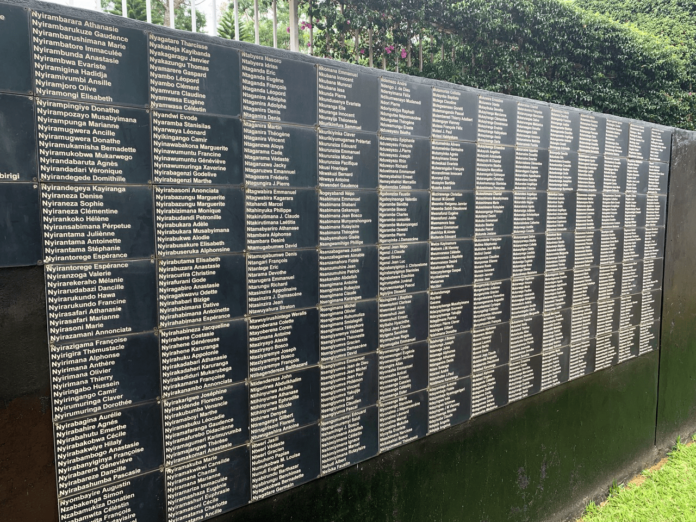(The Rev. Noel G. L. Hutchinson Jr., mission director for the Progressive National Baptist Convention), will be in Rwanda from December 3-8 for a leadership conference with 200-plus pastors from throughout the African country. A keynote speaker, the Memphis-based organizer of Greater Works Fellowship will also be teaching and preaching and blogging along the way. This is the third installment.)
KIGALI, Rwanda — Flights from outside of Africa arrive in Kigali at night. After 32 hours in the air, I relished the comfort of the hotel room bed.The next day, I left with my hosts to engage Kigali.

We initially planned to meet with a government official, but the meeting got pushed back to Monday, so we went to the Kigali Genocide Memorial. It is to Rwanda what the National Civil Rights Museum in Memphis is to us — a place of learning, remembrance and reflection.
The visit to the memorial helped me to put in better context what I saw around me in Kigali. Security is in every mall, bank, hotel and public space. I know, you may think I’m taking about a scenario similar to the various security companies you see in Memphis. You would be quite wrong.
Every time we arrive at the hotel, for instance, security sweeps the bottom of the vehicle with a metal detector. They then open every door and the trunk while also looking in the glove department. The hotel also has a metal detector. The airport had one that you walked through AFTER you landed.
To us, this sounds repressive, but when viewed in the context of what happened 24 years ago, it is quite understandable.

During the genocide, one million people were killed. Said another way, one out of every 10 Rwandans were murdered. Dead bodies were everywhere — in the middle of the street, ditches, fields, churches, rivers and homes. Over 2 million people fled to neighboring countries. The exodus group added to the large numbers already relocated over the years. Keep in mind that this is a nation the size of Maryland.
Walking through the memorial, you learn that the beginnings of what happened 24 years ago began with the Belgians in 1914. They took the classifications of groups that already existed and made them tribes.
The differences between Hutu and Tutsi were actually fluid, as they are the same ethnic group, which speak the same language. In the minds of the ancient Africans, the differences more centered around economics, as a Hutu could become Tutsi as they became more prosperous. The Belgians made these lines permanent, and planted a divide-and-conquer mentality that ultimately blossomed into the 1994 genocide.
In the museum, you see pictures of bodies in the street, with bleached coloration due to decomposition. You see the clothes people wore when they were murdered. You see pictures of the murdered. You see bones — skulls, leg and arm bones — with several bleached due to being in the elements.
On the grounds of the memorial are mass graves, which contain the remains of over 250,000 people. Most of the mounds are sealed, but there are a couple of open graves, meaning that they are still active. Today, 24 years later, bodies are still being found.
I left the memorial and went to the YES Africa Conference, an interesting one focused on youth business and technology startups. It was attended by youth from across Rwanda, with a smattering of others from across the continent. I was to give remarks. Let me pause here to highlight a cultural difference.
When we speak in Memphis, it is usually some type of keynote address. Here, you give remarks. When we give remarks in Memphis, I think the general assumption is three to five minutes (although many of us possess long windedness that can move sailing ships).
As I stood, my Kigali host whispered that I had 30 minutes! Since I was mentally ready for three to five minutes, I pulled together conversation that I hoped would connect me to them, while encouraging them that what they would do now and in the future would impact their communities. It seemed to be well received.

During the question-and-answer period, a young lady raised her hand, stood up and said she was familiar with me; she had watched me on television during a visit to Washington, D.C. One of her D.C. hosts had streamed the show. I couldn’t believe it. The moral of this story is…you never know who is watching you, and the impact you can have as you do “what you do.”
Thank you for reading…more to come…
The Journey:
An unexpected opportunity in Rwanda



